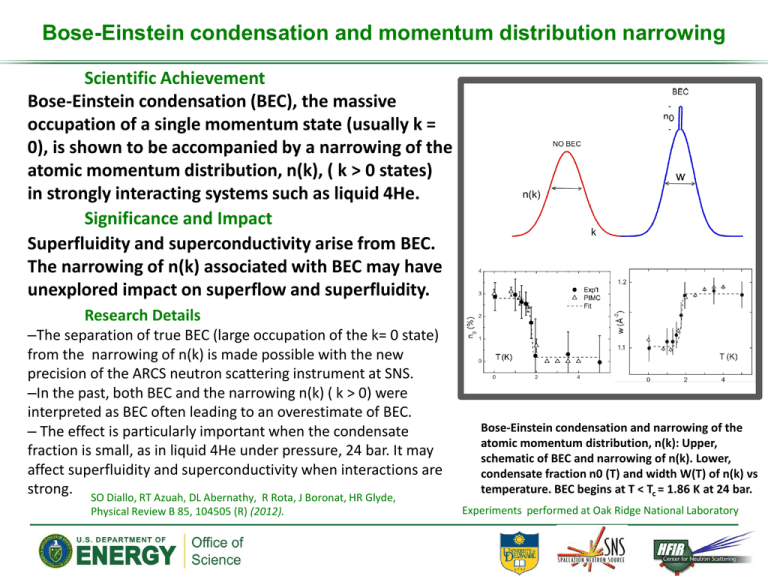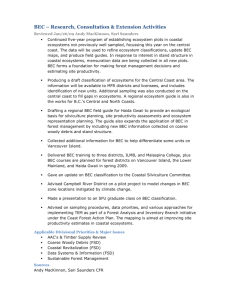Highlight_BEC_HRG_plus
advertisement

Bose-Einstein condensation and momentum distribution narrowing Scientific Achievement Bose-Einstein condensation (BEC), the massive occupation of a single momentum state (usually k = 0), is shown to be accompanied by a narrowing of the atomic momentum distribution, n(k), ( k > 0 states) in strongly interacting systems such as liquid 4He. Significance and Impact Superfluidity and superconductivity arise from BEC. The narrowing of n(k) associated with BEC may have unexplored impact on superflow and superfluidity. Research Details –The separation of true BEC (large occupation of the k= 0 state) from the narrowing of n(k) is made possible with the new precision of the ARCS neutron scattering instrument at SNS. –In the past, both BEC and the narrowing n(k) ( k > 0) were interpreted as BEC often leading to an overestimate of BEC. – The effect is particularly important when the condensate fraction is small, as in liquid 4He under pressure, 24 bar. It may affect superfluidity and superconductivity when interactions are strong. SO Diallo, RT Azuah, DL Abernathy, R Rota, J Boronat, HR Glyde, Physical Review B 85, 104505 (R) (2012). Bose-Einstein condensation and narrowing of the atomic momentum distribution, n(k): Upper, schematic of BEC and narrowing of n(k). Lower, condensate fraction n0 (T) and width W(T) of n(k) vs temperature. BEC begins at T < Tc = 1.86 K at 24 bar. Experiments performed at Oak Ridge National Laboratory











